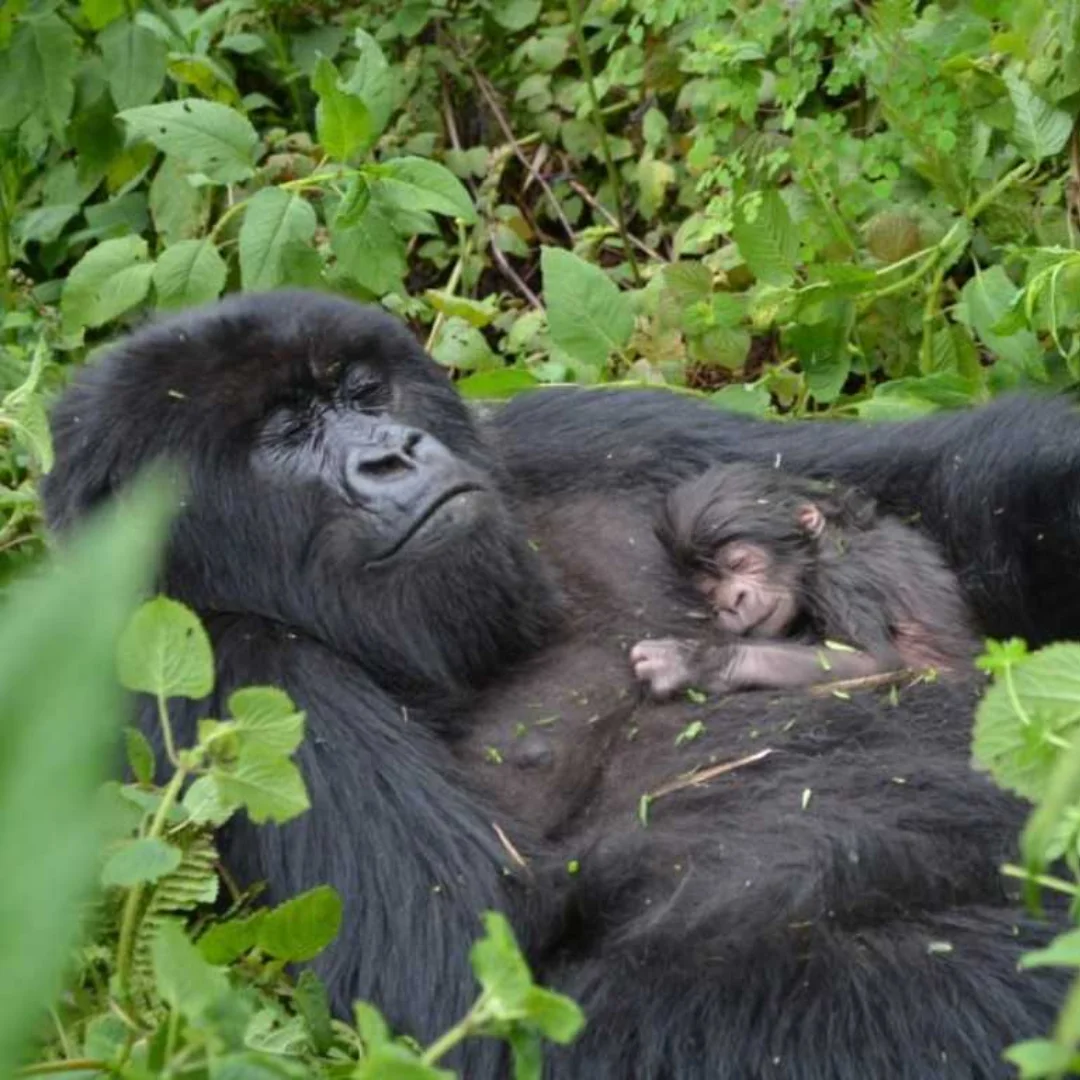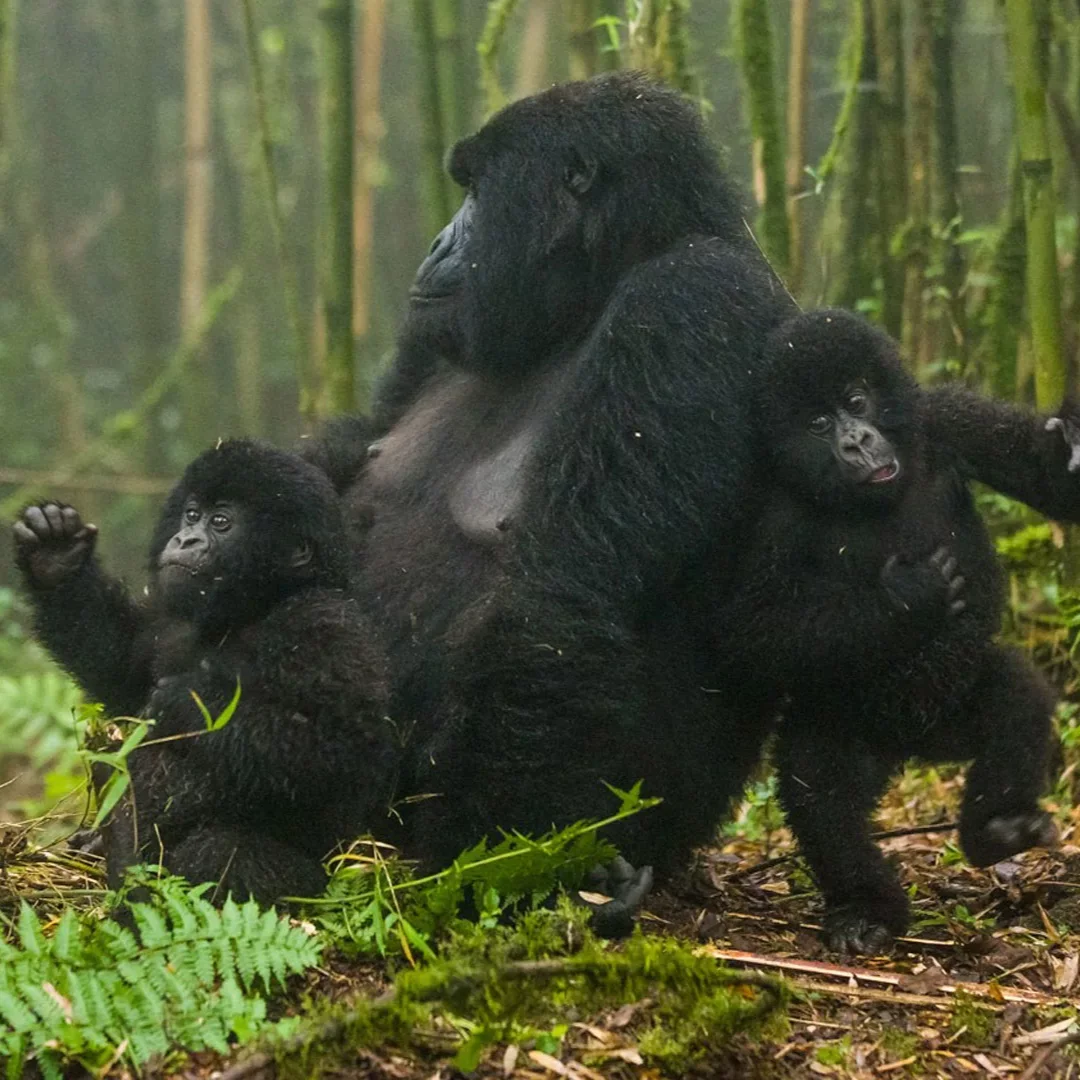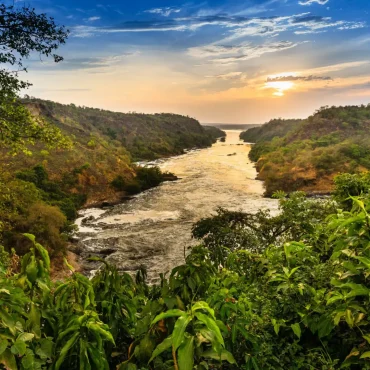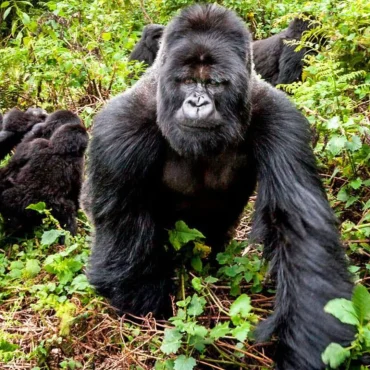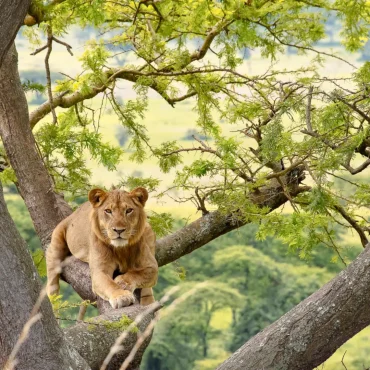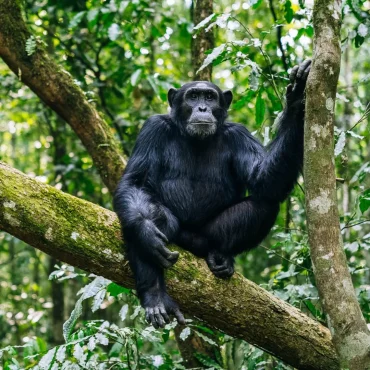Bwindi Impenetrable National Park
Bwindi Impenetrable National Park is a renowned haven for mountain gorillas and lies in Uganda’s southwestern corner. It’s home to more than half of the world’s remaining mountain gorilla population, with over 360 of these majestic primates residing within its dense forests. Covering 331 square kilometres and elevations ranging from 1,190 to 2,607 meters, Bwindi’s terrain is as challenging as it is beautiful, earning its name as the ‘Impenetrable Forest.’ This park is a critical conservation area and also a significant contributor to Uganda’s wildlife tourism, thus, attracting adventurers and nature lovers from around the world.
- Walk among ancient trees and encounter gorillas up close in their natural home.
- The challenging terrain of Bwindi is a haven for diverse wildlife and plants.
- Your visit helps support local conservation efforts that protect these gorillas.
- Explore a world apart, where every step supports the community and conserves nature.
Visiting Bwindi Impenetrable National Park is a deep dive into nature and a chance to directly contribute to the conservation of one of the planet’s most endangered species- the mountain gorillas.
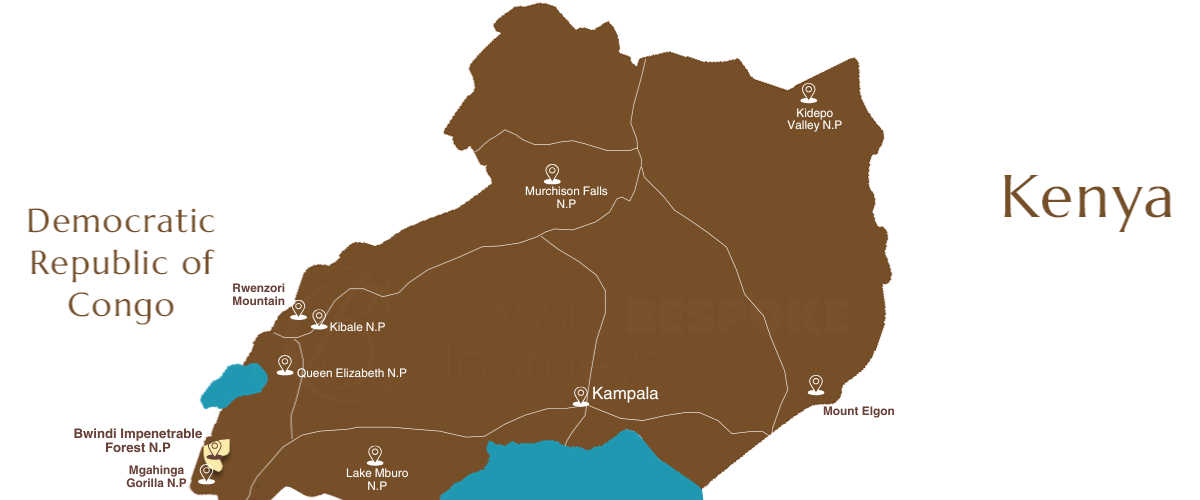
Best Time To Visit
Bwindi is where the wild things roam and bird songs fill the air, this UNESCO treasure is Uganda’s gateway to the gentle giants.
The best months to visit Bwindi Impenetrable National Park for gorilla trekking are between June and August and from December to February. During these months, the park’s paths are drier and not as slippery, making it easier to walk through the forest. The weather is mostly sunny, which is great for seeing the gorillas clearly and taking good photos. These drier periods make the trek more comfortable, so you can focus on enjoying the incredible experience of watching the gorillas in their natural home.
The rainy season, from March to May and September to November, also offers a special experience. The rain makes the forest lush and green, which is beautiful. It’s a good time for bird watching because many birds are more active. Yes, the paths might be a bit muddy and wet, but the forest feels extra alive, and tracking gorillas during this time feels like a real adventure. The rain adds to the thrill and makes you feel part of the vibrant, rainy forest life.
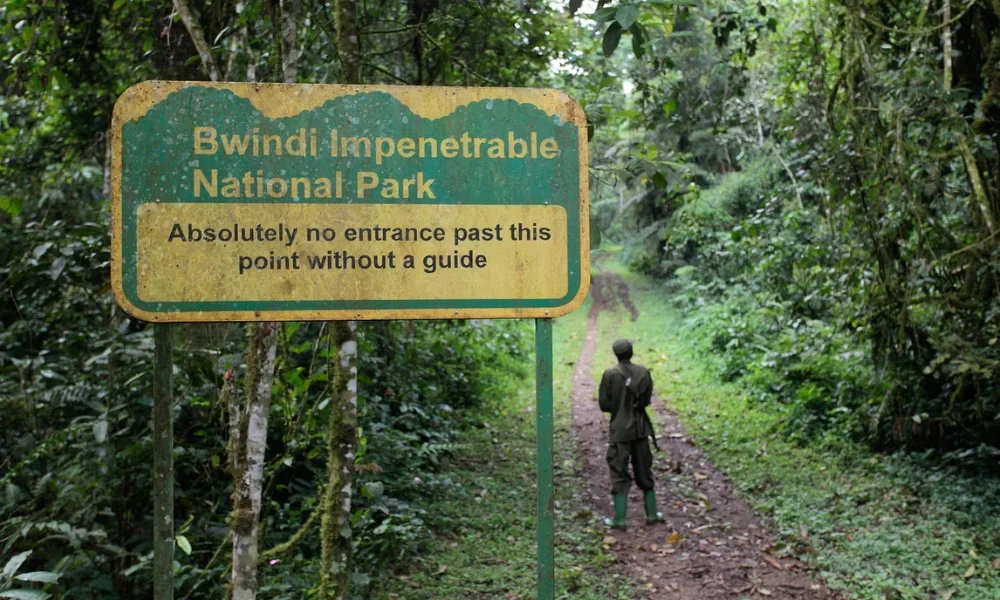
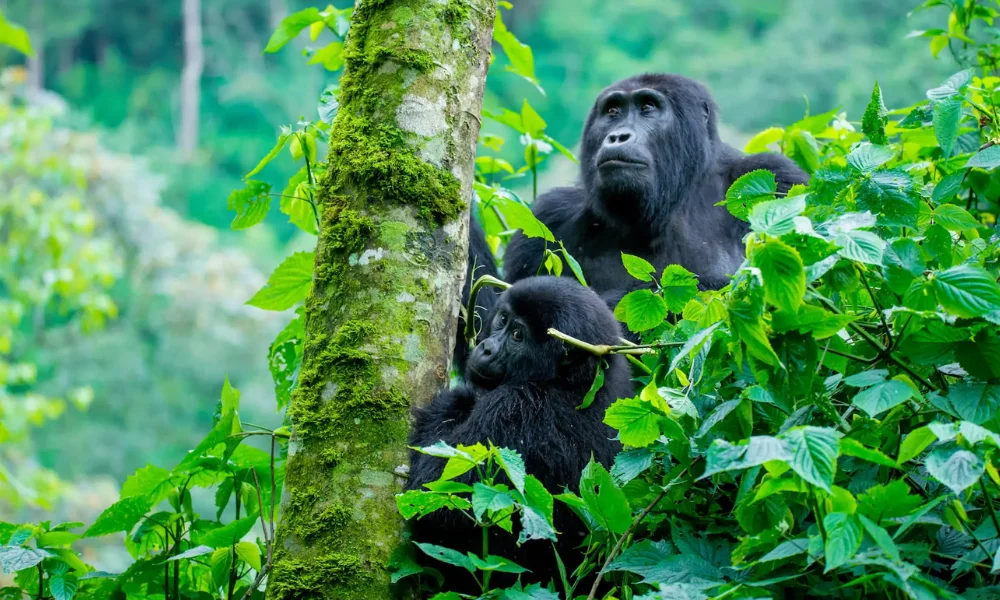
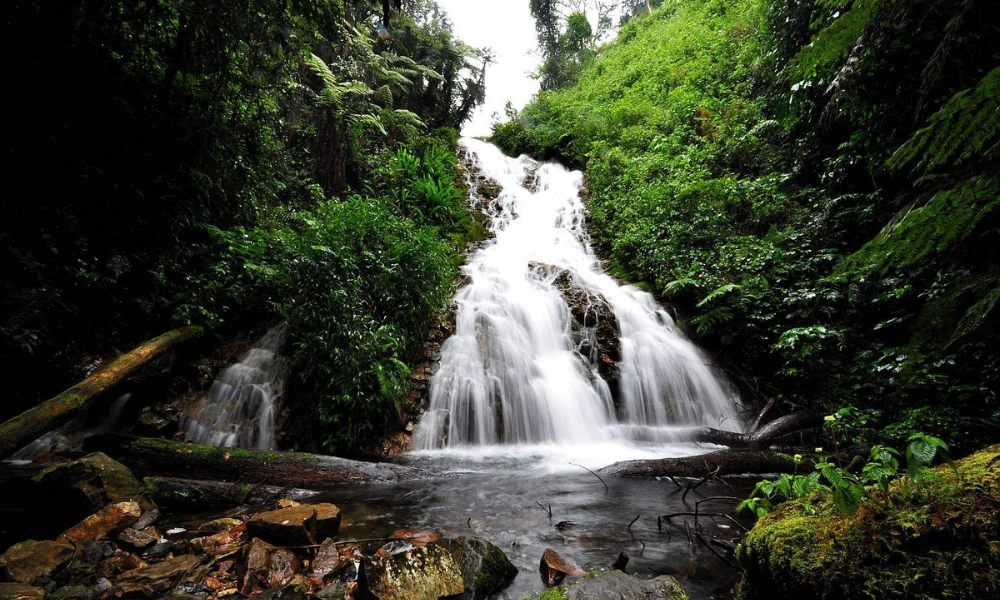
Wildlife
Bwindi Impenetrable National Park is famous for its large family of mountain gorillas. Out of around 400 gorillas, more than a hundred are used to human visitors.
Besides gorillas, the park is home to over 120 types of mammals, but many of them are small and hard to spot. You might not see the elephants often, but you could catch a glimpse of bushbucks and different kinds of duikers wandering through the forest.
This park is a key place for protecting rare animals and plants. It has a stunning collection of 220 butterfly species, including three kinds that live only in Bwindi.
There are also ten different primate species here, like the rare L’Hoest’s monkey and the striking black-and-white colobus. While chimpanzees live here too, they’re shy and not used to people, so seeing them is a rare treat.
Bwindi Impenetrable National Park FAQs
Bwindi is about 530 kilometres from Kampala. It takes roughly 8 hours by road to reach the park.
The park is famous for gorilla trekking. It’s also great for bird watching with over 350 species, including many rare ones. You can also go on nature walks, spot other primates, and enjoy community interactions.
Bwindi is in southwestern Uganda. It spans from lowlands to high altitudes, offering diverse habitats and making it a prime spot for gorilla tracking and bird watching.
Visitors can trek to see gorillas, go bird watching, take primate walks, explore nature trails, and participate in community walks to learn about local conservation efforts.
You can drive from Kampala or take a domestic flight to Kihihi Airstrip, followed by a short drive to the park. The flight is quicker and more convenient for many travellers.
Why Visit Bwindi Impenetrable National Park?
Gorillas
Home to over half the world's mountain gorillas in misty forests.
Birdwatching
Spot over 350 species, including rare Albertine Rift endemics..
Hiking
Explore diverse trails from easy walks to challenging hikes.
Community
Engage with local cultures through immersive community walks and performances.
Nature
Discover waterfalls, unique vegetation, and wildlife on guided nature walks.
Conservation
Support vital conservation efforts for endangered species and their habitats.
Explore Uganda Destinations
What Customers Say About Us





